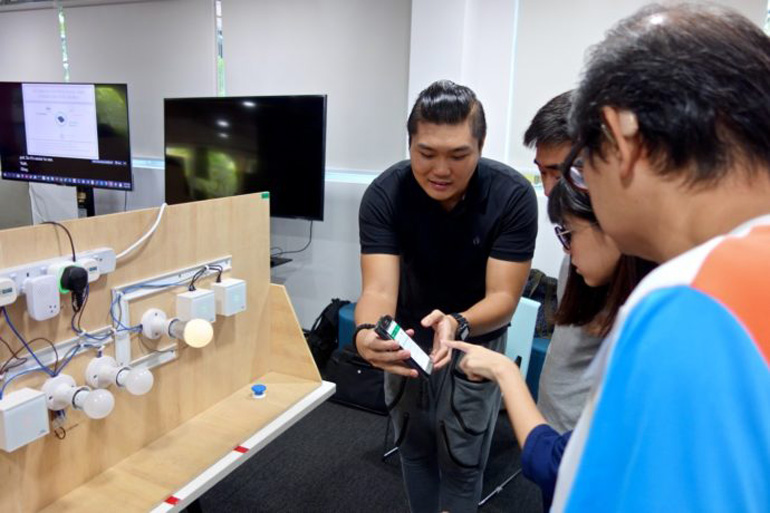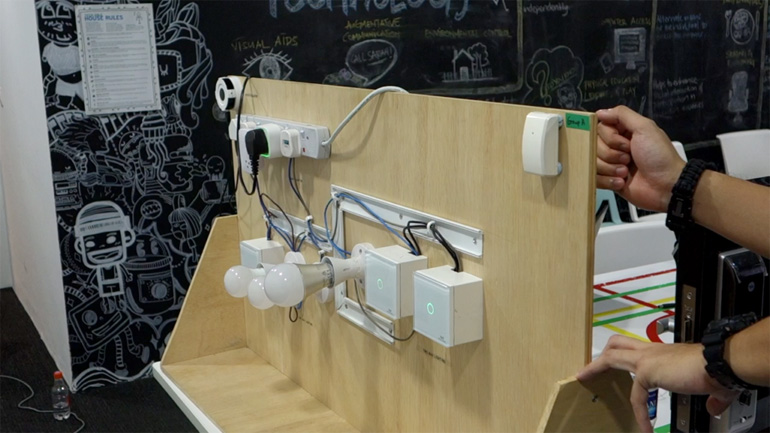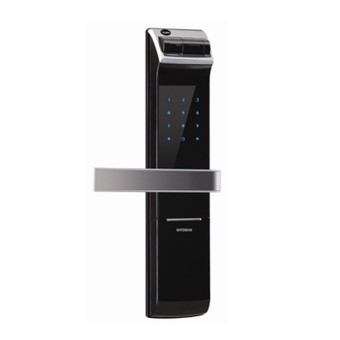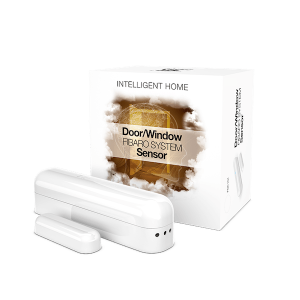
For persons with disabilities, smart home devices can transform their lives by enabling greater convenience and independence. For instance, Yuki Neoh, who is hearing impaired, sometimes misses deliveries even when she is at home because she cannot hear the ringing of the doorbell or the knocking on the door. With the use of a vibration sensor and a smart light bulb, this problem could be easily overcome.
At the recent Smart Home Workshop for Persons with Disabilities, Darius Sim, founder of the home automation company eVida Smarthome Pte. Ltd, demonstrated the use of these devices amongst others. By installing the vibration sensor on the door, plugging in the smart light bulb and linking them together with an app, he showed Yuki how to programme the bulb to flash a different colour when the delivery courier knocks on the door. “This would be very helpful because I wouldn’t miss deliveries anymore and have to go somewhere inconvenient to get it the next day,” Yuki said.
The Smart Home Workshop for Persons with Disabilities was organised by SG Enable together with eVida Smarthome to bring about greater awareness of the convenience of smart home technologies, especially as smart home devices are becoming less expensive and easier to use. The event was supported by POSB and held at the Enabling Village.
Here are some of the devices that were demonstrated at the workshop. These can all be controlled through a single app on a smartphone.
Smart bulbs
These can be useful for persons with disabilities in many ways. The hearing-impaired, for example, can use them as alerts for deliveries and visitors. They can also use the bulbs for alerts by programming them to flash at a specified time.
The bulbs are also useful for persons with physical disabilities because they can be switched on or off through the app. This means that a person who has difficulty walking can switch the bulb on or off from anywhere in the house instead of having to go to the light switch.

Using a vibration sensor mounted on a door and a smart light bulb, people who are hearing-impaired can get a visual alert when a delivery courier or visitor is at the door.
Smart door lock
Persons with mobility challenges can install smart locks on their front doors so that they can lock or unlock the doors more easily through their smartphones, for example, when they have visitors. The locks can also be combined with cameras so that they can use the smart home app on their phones to see who is at the door.
Caregivers can use smart locks to let care attendants, nurses and therapists into the home when they are out. Furthermore, such locks can be combined with smart buttons located in the home, so that persons with disabilities can press the buttons to simultaneously alert their caregivers and unlock their front doors for emergency services if they have an accident while they are at home alone.
There are usually several ways to unlock smart locks, including entering a pin code, pressing a finger to the biometric access point and using a traditional key, so users do not have to worry about being trapped inside or locked out of their homes if the smart lock runs out of power. The locks are typically battery-powered and will also alert users if they are running low on power.

A smart door lock with pin code display, biometric access and a traditional keyhole for key access.
Smart plugs
These are power switches that can be controlled through the smartphone app. By plugging these into power outlets and then plugging appliances into them, persons with mobility challenges can easily switch on and off the appliances without having to go to the outlets. This can be especially helpful if a device or power outlet is located in a difficult-to-reach area.
Door and motion sensors
Door sensors can be installed and coordinated with smart switches so that the light in the entryway is switched on at night when the door is opened. Motion sensors can also be used to switch on smart lights and other smart appliances automatically to make life more convenient for persons with physical disabilities.

A door sensor which comes in two parts – one part is attached to the door frame and another to the door. The sensor can be combined with a smart light bulb to automatically switch on the light at night when a person arrives home and opens the front door.
To find out more about these and other devices such as smart blinds and smart sirens, contact eVida Smarthome at hello@evida.com.sg.